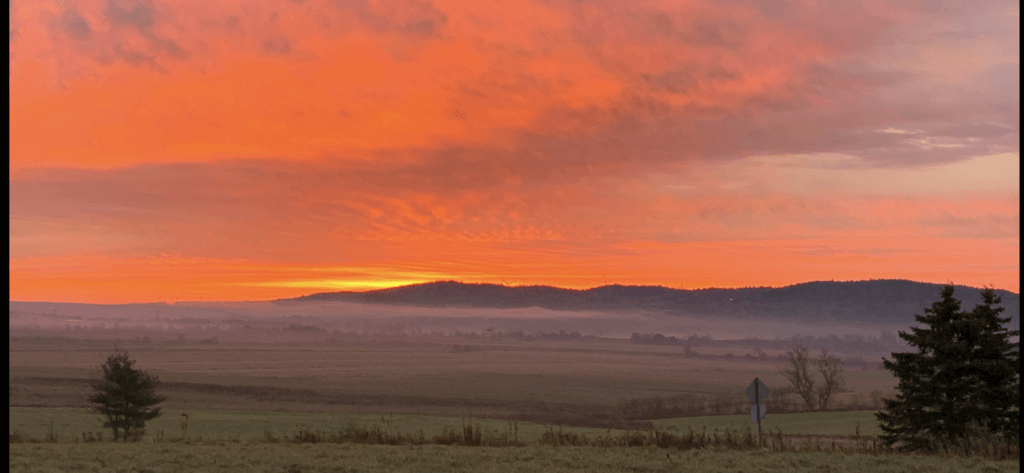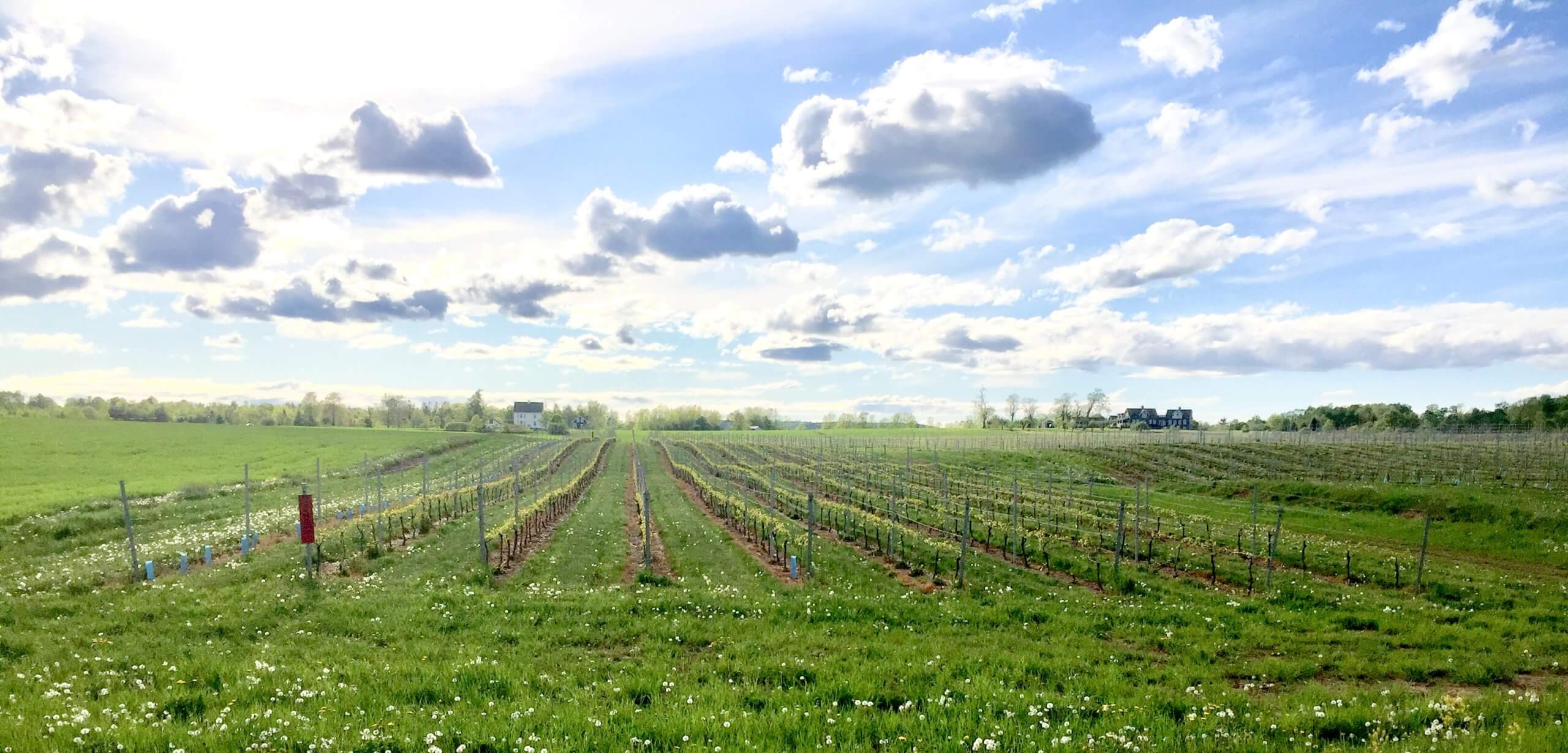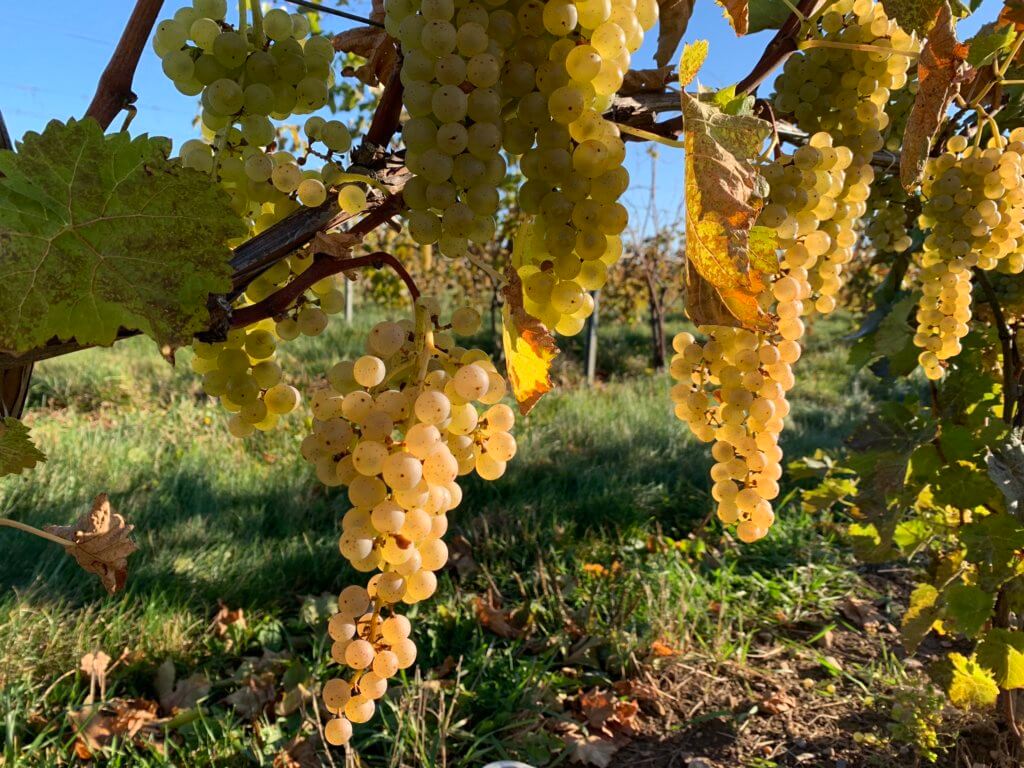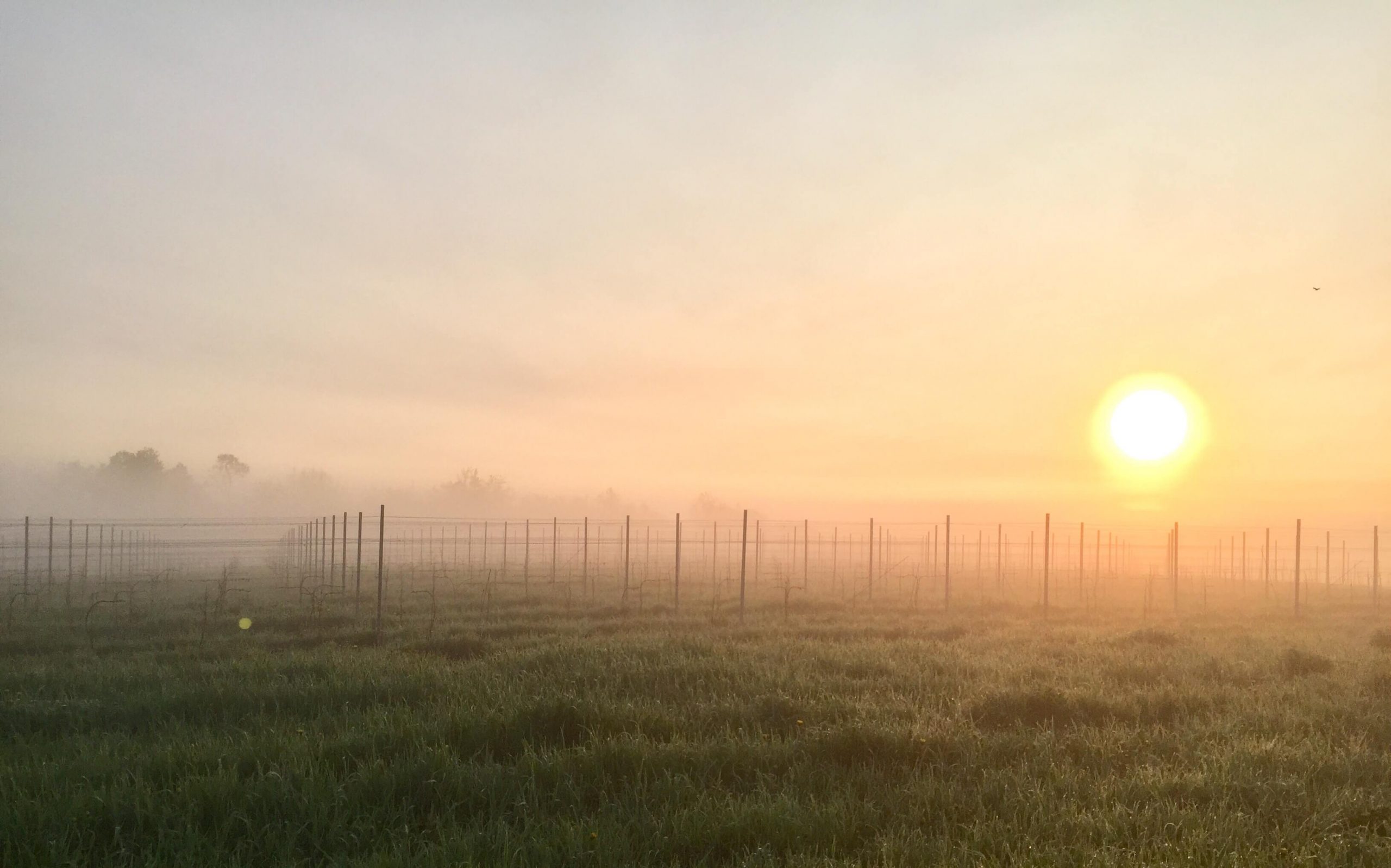Summer and Fall 2017 at Johnston Vineyards
Summary
The weather was ideal for new vines planted in 2017 at Johnston Vineyards. The last 9 acres of grapevines were planted this spring for a total of 31 acres over the past 3 years. The weather was also favorable for the grape crop with lots of sun and a prolonged fall. The first frost wasn’t until the second week of November. This was the first year that grapes were harvested from vines planted in 2015 and about 35 tons of hybrid and vinifera were picked from 14 acres in September-November. Time will tell if the plants were over cropped. Stressing immature plants may lead to damage and poor yield the next year. Half the buds were removed from all the vines in the spring but only a small amount of subsequent thinning was done. Next year the third year vinifera will be thinned more aggressively. The spray program was organic in nature which meant much more frequent spraying but there was little observed disease. Soil and leaf nutrient analysis was conducted and the most noticeable abnormalities were a widespread deficiency in potassium and an excess in copper where an old orchard used to be. Except for this years planting the grape hoe did all the weeding and no herbicides were used. Some hand weeding of the big weeds around the trunks and line posts was needed. The lanes were reseeded with Campus Green, a mix of Kentucky bluegrass, creeping red fescue and perennial rye (with 5% annual rye added for good measure) which provided a dense carpet of grass in contrast to the previous patchy clover cover crop. It also resulted in more frequent mowing. The two year old plants grew rapidly and needed hedging. Few grapes were produced on these plants. The first year plants were enclosed in grow tubes which resulted in a tall plant and easy weeding with the herbicide Ignite.
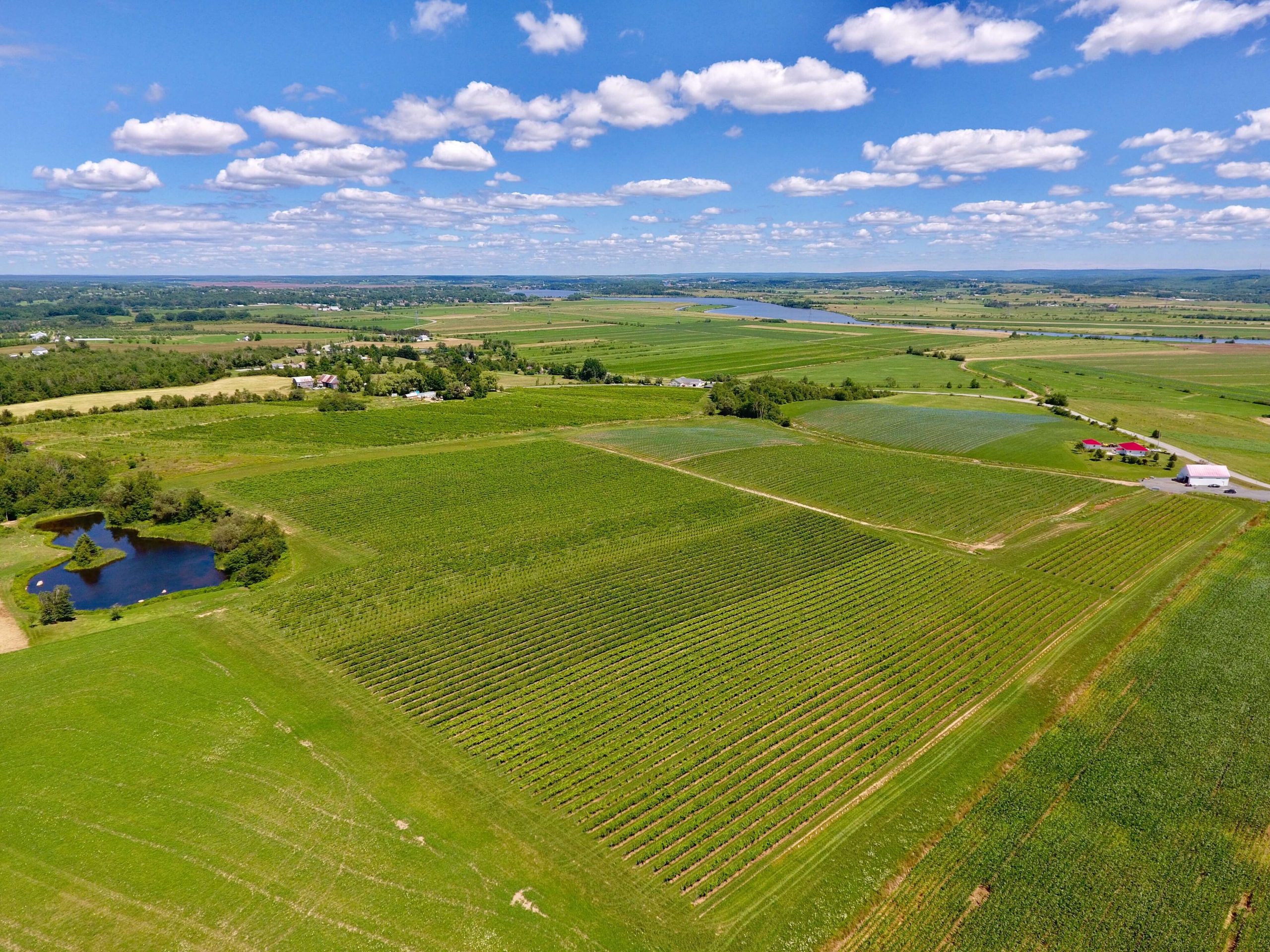
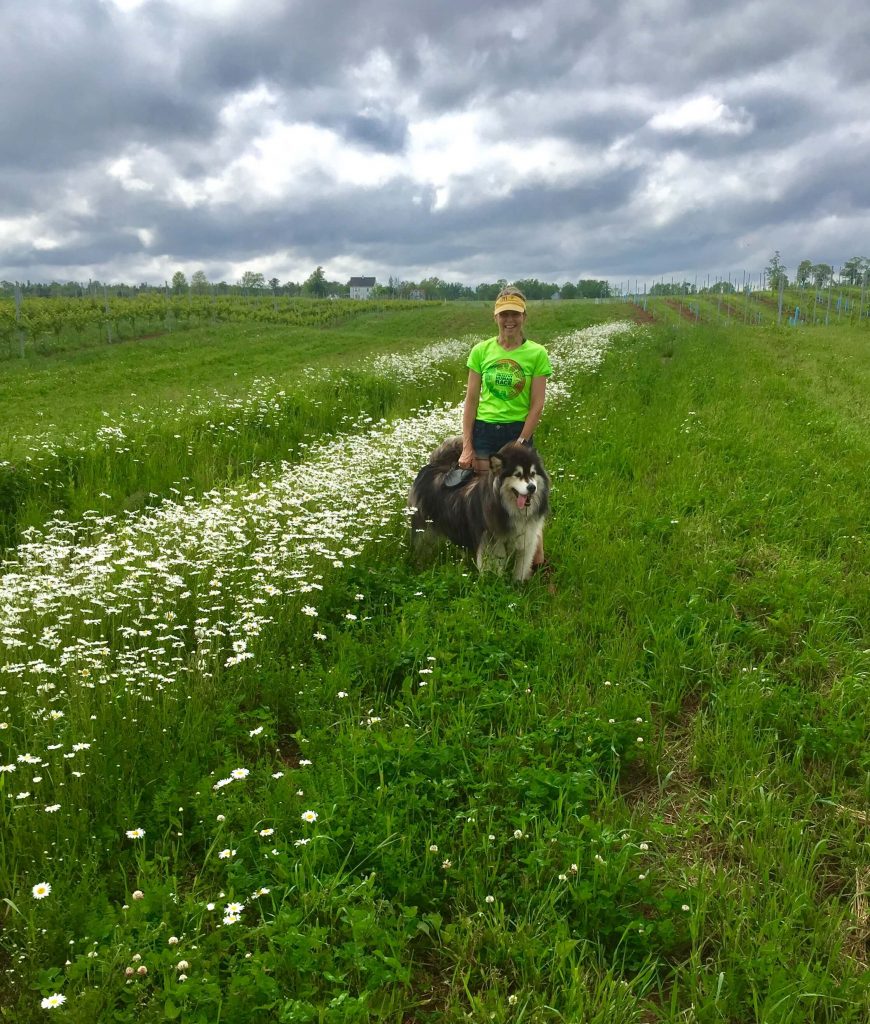
Soil and Vine Nutrient Analysis
The soil is tested once a year in October (LP Consulting/Lise LeBlanc 902-256-2636). This year petiole and leaf analysis were done at full bloom and veraison, respectively, for the first time. Copper and sulfur were artificially high in the tissue due to spraying, but soil samples showed no change in levels from 2015. Potassium was low. New technology fertilizer was applied for the first time. This consisted of multiple nutrients on a single prill. MESZ has nitrogen, phosphorus, sulfur and zinc on a single prill. NK21 has nitrogen and potassium and Aspire has potassium and boron on a single prill. How to interpret the tissue report is shown in in the Department of Agriculture interpretation of lab tests. How to collect the samples is shown in how to take a sample. All the laboratory services are shown at all laboratory services. Johnston Vineyards soil analysis from October 2017 is shown here Soil analysis October 2017.
Organic Spray Program
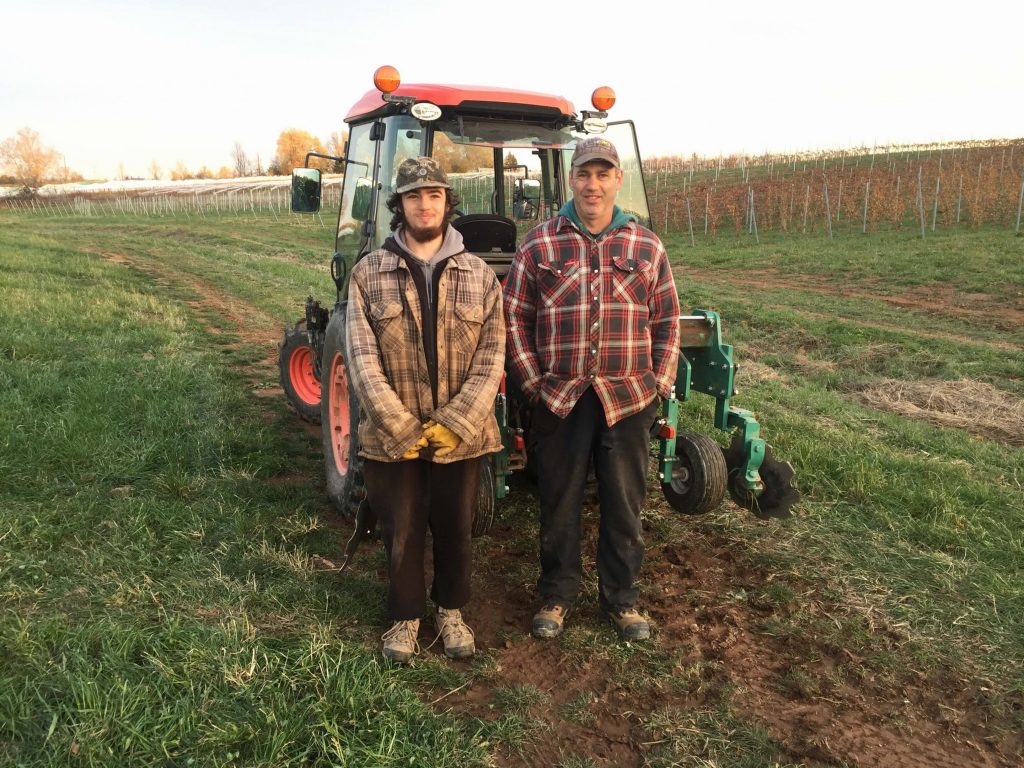
A 3 year time period between use of chemicals and organic certification is required. That will will be 2019 for the first 22 acres planted. I will be spending the winter working on the necessary record keeping required for certification. No chemicals have been sprayed for pest control since 2016. This year a highly regulated program of spraying was instituted using sulfur for powdery mildew control and copper for downy mildew. There was minimal evidence of either disease. However, it required much more frequent spraying, ie., every 10-14 days or after 10 mm rain. Serenade (Biofungicide from Truro Agromart/Nick Juurlink 902-805-9300 or Scotian Gold, Coldbrook 902-679-6661) was applied twice and Potassium Carbonate (available from Winemakeri in Lower Sackville 902-864-0100) twice for the prevention of Botrytis (organic spray program).
Diseases
Cabernet Foch: The trunks were highly susceptible to winter trunk cracking and subsequent crown gall and about 15% of the ungrafted vines planted in 2015 were removed this year. Vines grafted with 3309 seemed to be a little less affected and new trunks developed rapidly to replace diseased trunks in 2 year old plants. Vines planted at the same time from the same nursery but in a different area of the vineyard were more vigorous and showed less evidence of crown gall. This suggested a nutritional problem, possibly potassium deficiency causing winter susceptibility and trunk cracking. Cabernet Foch is a candidate for top wire trellising as it has a strong downward trailing tendency, worse than NY Muscat.
New York Muscat: The lower leaves turned brown by mid summer. A recent trial at Benjamin Bridges winery in the Gaspereau Valley (mentioned at the GGANS meeting there) showed that selected root stock eliminated this problem and produced much more vigorous vines. I wonder if this reflects a potassium absorption issue? Most new plantings of Muscat at other vineyards are being trained on top wire trellis systems. Since this limits access with vineyard equipment another option may be to put fruiting canes in one direction on the lower fruiting wire. This would still take advantage of Muscat’s tendency to fruit at the distal ends of the fruiting canes (apical dominance).
Riesling and Chardonnay: These vines were overly productive despite removal of 50% of the buds in the spring. Approximately 3 metric tons/acre were picked from 3 year old plants and this may affect next year’s yield. Approximately 5% of each variety was lost to crown gall despite being on 3309 root stock. Chardonnay on 420 root stock showed more losses. Trunk trauma from the grape hoe and potassium deficiency in over wintering plants may have contributed to trunk damage and subsequent crown gall. Riesling was the only grape variety that had significant botrytis. It was worsened by crowded clusters, long hang time despite frost damage to leaves, and plant weakness from crown gall.
Phylloxera: Phylloxera infected the ungrafted Petite Pearl and to a much lesser extent the ungrafted Marquette. It is mostly an eyesore and doesn’t seem to adversely affect the root system. If the infection begins early in the year and appears to be spreading quickly then in the non organic vineyard Movento can be sprayed with good results. Spray once the shoots are out 18-24 inches (spray for phylloxeria.).
Mildew: Powdery mildew was absent until late in the season when it appeared on the Vidal. The copper dose was 6 kg/hectare/year or less, as recommended by the European Union Rules for Organic Wine Production to prevent copper buildup in the soil of organic vineyards. The level of copper in the soil at Johnston Vineyards has not changed since 2015. Downy mildew was not seen in the vineyard. The first year plants were not sprayed.
Animal Pests
Bird netting was applied to 6 rows of Cabernet Foch and not to any other vines. Four bird squawkers (UltraSon Type 650 from Shemogue Custom & Trellis/New Brunswick 506-533-4301) and 3 cannons (Triple John Carousel V9/Night Guard from Critters B Gone/Falmouth 902-788-5498) controlled birds on 14 acres of vines. Grapes were carefully monitored for bird damage and if any was noticed the noise makers were shifted to that location. About 10 clusters of red grapes were eaten with no damage to the white grapes. Even the Riesling that were left out until the second week of November were untouched. Raccoon netting was needed (Phoenix Agritech, Debert, NS, 902-662-2444). The netting was erected at the first sign of raccoon damage. Grapes eaten from the tip of the cluster to the base with muddy paw markings on the remaining grapes were the result of raccoon damage. Birds eat from the top down to the tip of the cluster. Skunks were frequently observed in the vineyard but didn’t seem to cause much damage. They appeared to rout for food under the vines.
Grow Tubes
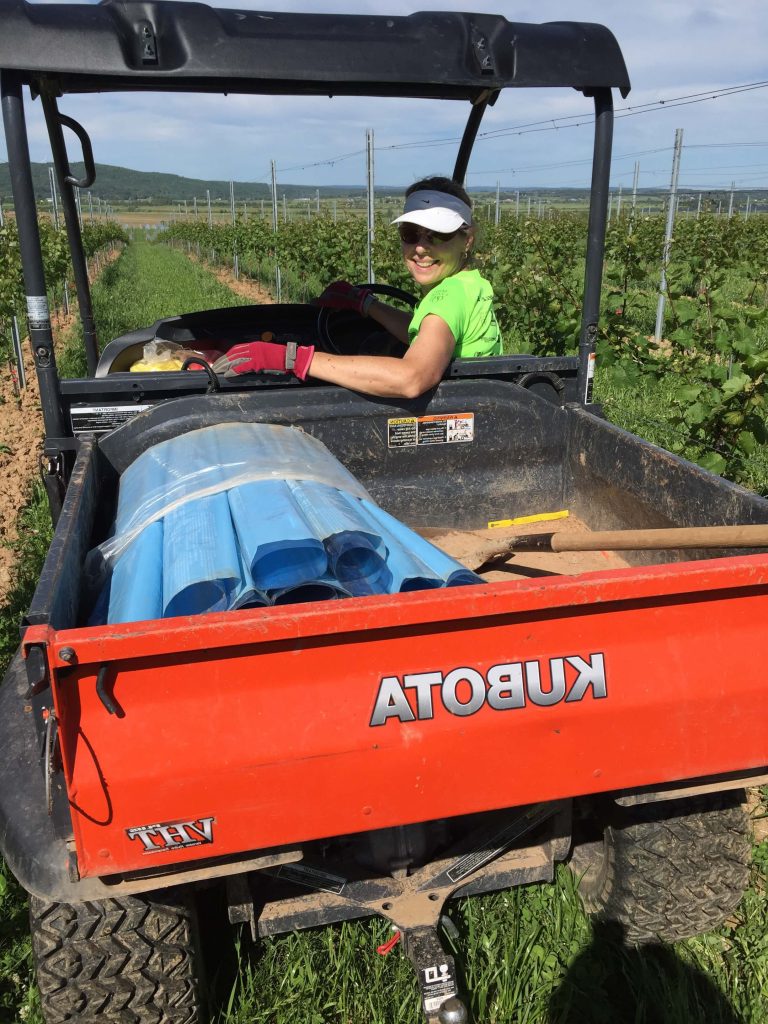
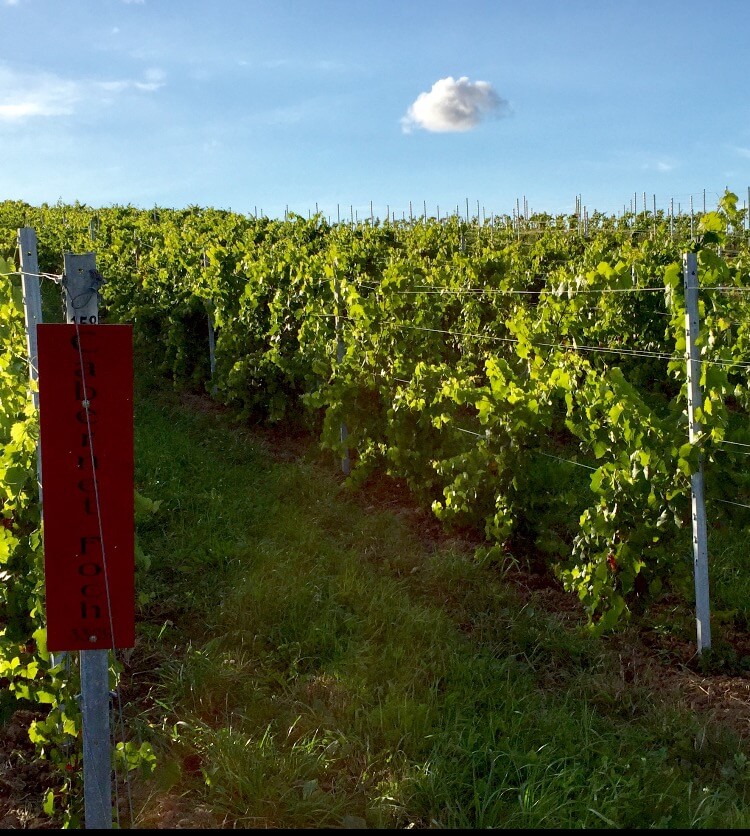
Grow tubes seem to produce more rapid development of vines and resulted in a moderate 2.5-3 metric ton crop/acre yield at Johnston Vineyards after 3 years. However, if the soil is fertile and weeding by hand is an option then grow tubes may be less useful based on my observation of other vineyard plantings. There is a risk that the tubes produce a tender vine going into winter and results in more trunk cracking and crown gall. This is more of an issue with vinifera. Cold hardy vines don’t seem to have a problem with winter hardiness in their first year.
Harvest
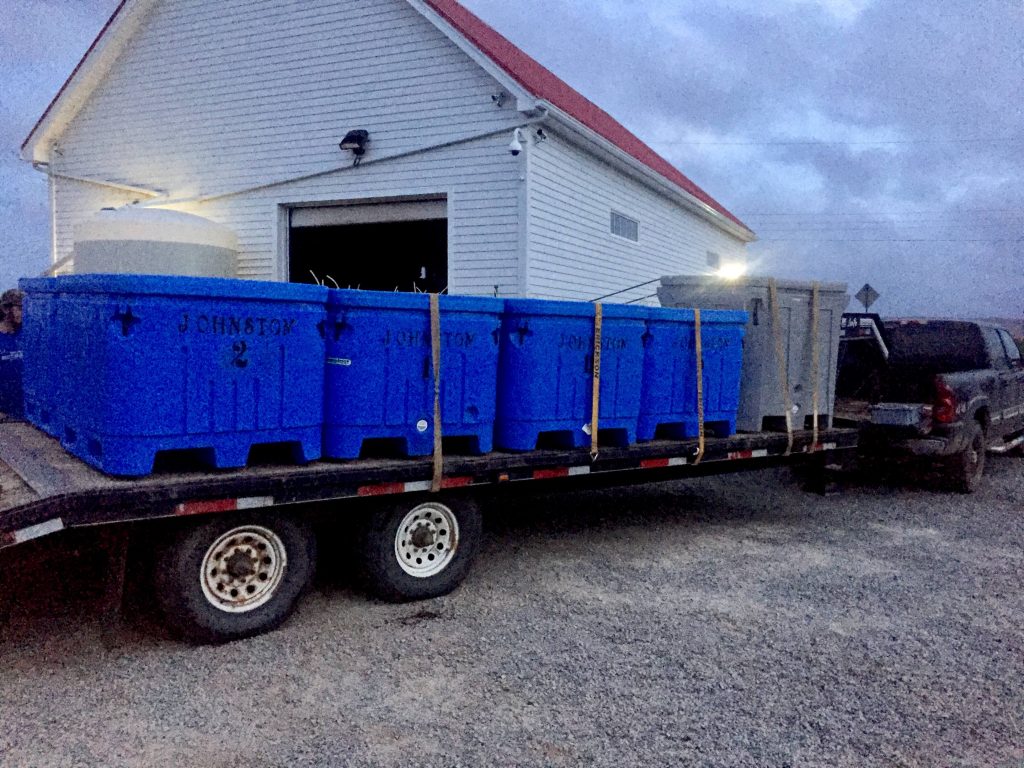
Finding pickers to pick grapes was a difficult task. Picking times were determined by the winery buying the grapes and tended to give short notice. There were 7 different varieties to pick which meant about 2 days picking for each variety scattered over about 2 months. Johnston Vineyards mostly had it’s own bins (500kg) which held about 350 kg of grapes. Typically the winery supplies the bins. Ideally the bins should be weighed before leaving the vineyard and the winery billed accordingly. The crush pad is a hectic place and mistakes can be made. I can see no place for payment according to Brix, especially with the common practice of picking early for sparkling wine production.
Hilling up (uphilling) under the vines
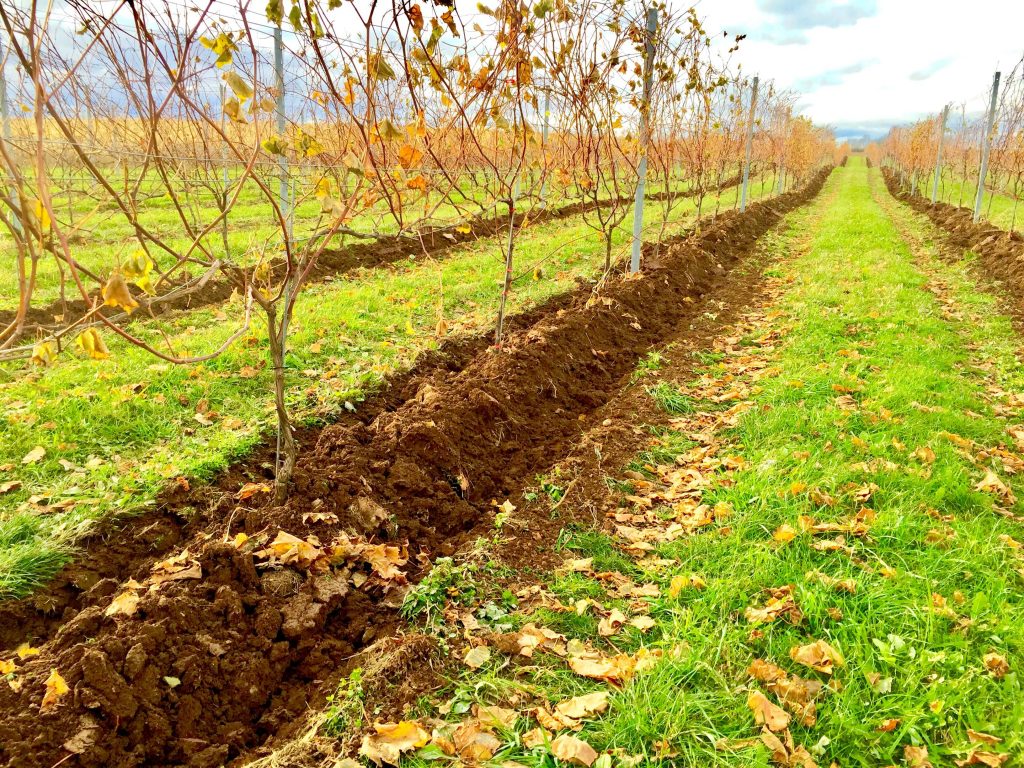
Uphilling is done with the grape hoe and covers the graft site of the vinifera vines. Since it also slows weed growth in the spring it is done to all the hybrid vines as well. It is usually done after a couple of hard frosts.
